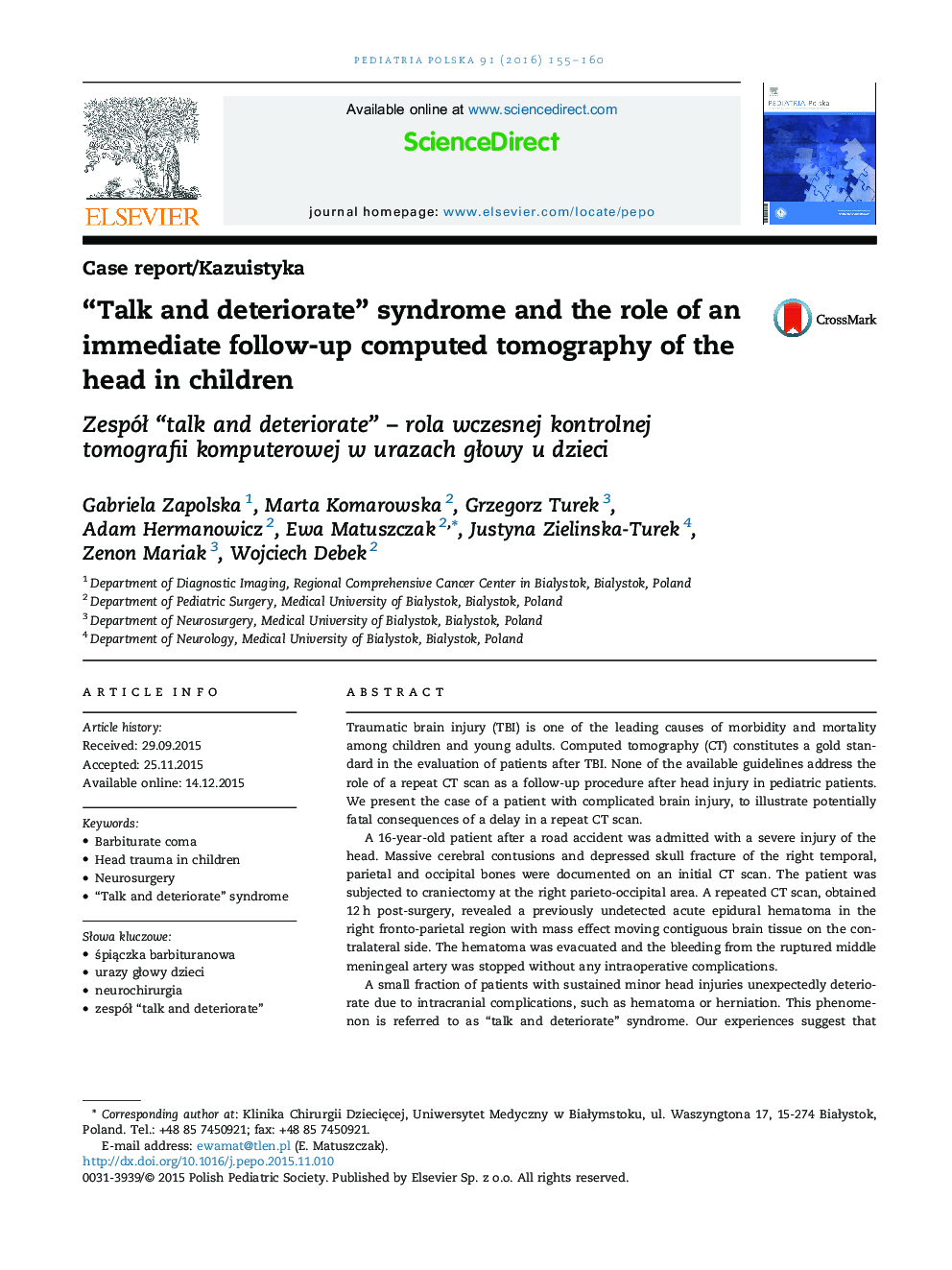| Article ID | Journal | Published Year | Pages | File Type |
|---|---|---|---|---|
| 2677822 | Pediatria Polska | 2016 | 6 Pages |
Traumatic brain injury (TBI) is one of the leading causes of morbidity and mortality among children and young adults. Computed tomography (CT) constitutes a gold standard in the evaluation of patients after TBI. None of the available guidelines address the role of a repeat CT scan as a follow-up procedure after head injury in pediatric patients. We present the case of a patient with complicated brain injury, to illustrate potentially fatal consequences of a delay in a repeat CT scan.A 16-year-old patient after a road accident was admitted with a severe injury of the head. Massive cerebral contusions and depressed skull fracture of the right temporal, parietal and occipital bones were documented on an initial CT scan. The patient was subjected to craniectomy at the right parieto-occipital area. A repeated CT scan, obtained 12 h post-surgery, revealed a previously undetected acute epidural hematoma in the right fronto-parietal region with mass effect moving contiguous brain tissue on the contralateral side. The hematoma was evacuated and the bleeding from the ruptured middle meningeal artery was stopped without any intraoperative complications.A small fraction of patients with sustained minor head injuries unexpectedly deteriorate due to intracranial complications, such as hematoma or herniation. This phenomenon is referred to as “talk and deteriorate” syndrome. Our experiences suggest that a repeat CT scan should constitute a routine component of postoperative management, especially in pediatric patients after a neurosurgery or in a barbiturate coma.
